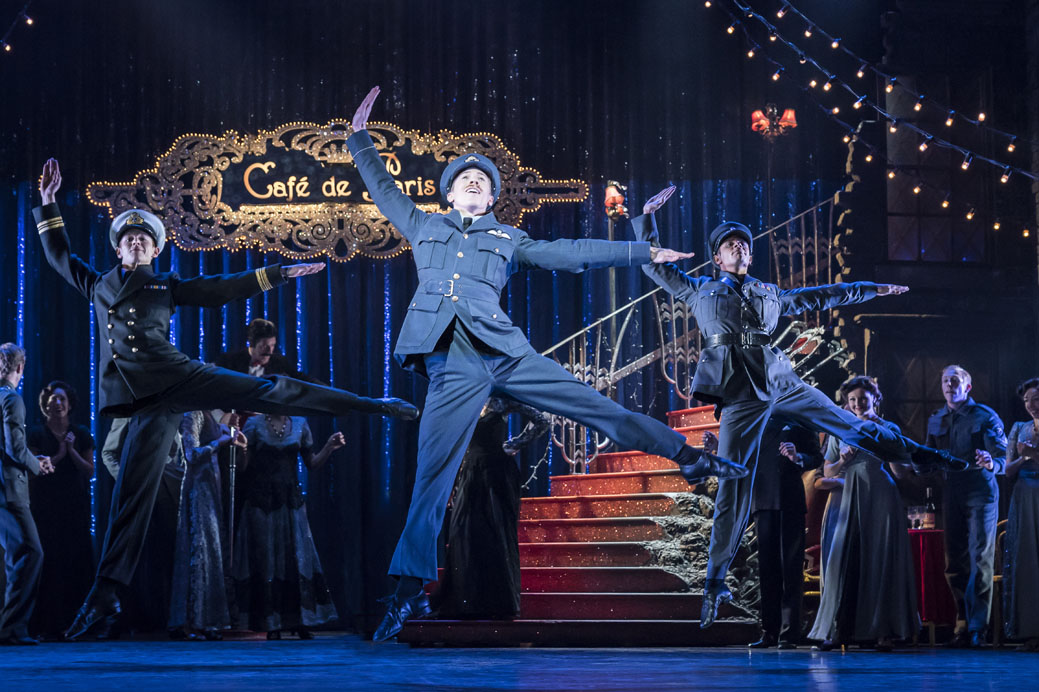
The dream team returns to Bristol with this ambitious reimagining and restaging of the classic tale of Cinderella. Director and choreographer Matthew Bourne and set and costume designer Lez Brotherston can probably do no wrong, such is their attention to detail and ability to draw out every morsel of emotional content from a sparkling cast of dancers.
Ashley Young danced the lead tonight with complete control, poise, grace and charm. Her ease of movement across the stage was a delight to watch, in particular her use of arms, wrists and hands to project the most perfect of perfect lines, was something to treasure.
Bourne talks of being influenced by the ‘dark heart’ of Prokofiev’s score, written during the second world war. Together with his love of early Powell/Pressburger films, and in particular A Matter of Life and Death made in 1946, starring David Niven and Kim Hunter, here he has montaged an unlikely amalgam of whimsy and romance with the unforgiving harshness of life during the London blitz. Originally conceived in 1997, Bourne’s Cinderella cannot be accused of hopping on the back of Brexit-fuelled nationalism, but with the release of Dunkirk and Darkest Hour last year, his show certainly seems to chime with a contemporary zeitgeist.
Using a predominantly grey palette for the costumes, Brotherston’s designs reflect the everyday wear of ordinary Londoners and service men and women from the war years. His beautifully realised sets, including memorable scenes from the Café de Paris, the London Underground, the Thames Embankment and Paddington station were always noticeably enhanced by the well-crafted lighting of Neil Austin.
In this retelling of the original folk tale, Cinderella acquires ‘ugly’ brothers as well as sisters. Her middle-aged stepmother Sybil acts tarty, still trying to pull the guys. Madelaine Brennan was one of the stand-out performers on the night with her facial expressions and body language matching some eye-catching moves that included one delightful chicken-like strut with her children that absolutely expressed Prokofiev’s lines.
In another homage to forties film, this time from Sam Goldwyn’s 1947 comedy romance The Bishop’s Wife, Bourne adopts a male angel in the role of fairy godmother. Liam Mower makes the role his own with a performance that earned him one of the biggest cheers at the final curtain. Peroxide-haired and wearing satin white, Mower’s angel is a force that cannot be ignored as he brings the shattered remnants of the Café de Paris and its dancers back to life after a German bombing raid.
As always with Bourne productions there is a hint of sexual tension woven into the choreography. Here there was pent-up unexpressed physical love interjected with shoe fetishism, rent boy and prostitute action.
Dominic North played the equivalent to Cinderella’s ‘prince’ as Harry, the RAF pilot, developing a soaring relationship with Young’s Cinderella with increasing verve and empathy as the evening unfolded. His clean lifts added to the feeling that Cinderella must be weightless.
Bourne knows how to create spectacle. In yet another film homage, this time to David Lean’s Brief Encounter, a shimmering melee of travellers spins around Cinderella and her beau before they depart the stage in a train carriage. And with imaginative use of wheeled hospital screens, the cast create an ever-changing backdrop of corridors and wards as the sweethearts are reunited in the most unlikely of circumstances.
Bourne’s greatest skill remains his ability to immerse himself totally in a score and play the notes with human gestures and movements in perfect sync. Prokofiev’s rich waltzes and occasionally discordant horns and strings have provoked some stunning passages in this presentation. You have to applaud Bourne’s ambition. But this girl-meets-boy story sometimes failed to ignite to quite the same degree as Bourne’s Sleeping Beauty or Red Shoes. The audience whooped and clapped, but I noticed they weren’t on their feet. ★★★★☆ Simon Bishop 21st March 2018
Photo by Johan Persson

